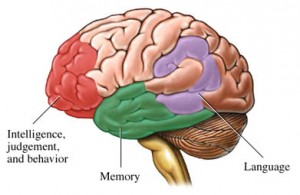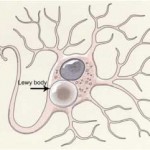Susan Williams: Dementia, not Depression, Led to Robin’s Suicide
Susan Williams, widow of comic icon Robin Williams, told People magazine that it was Lewy Body Dementia, and not depression, that most likely lead to Robin’s suicide.
“It was not depression that killed Robin. Depression was one of … let’s call it 50 symptoms, and it was a small one.”
Susan recounted an episode when she found her husband in the bathroom with a bloody head he had hit on the door. He called it a “miscalculation,” and seemed baffled by it. Shortly afterwards, they saw a psychiatrist who felt that his condition had deteriorated so much that it was time to consider inpatient treatment. Susan believed he would never leave such a facillity:
“[W]hat I know now is that if Robin was lucky he would have made it three years. And he might have never left a facility. It was very bad.”
Williams had been diagnosed with Parkinson’s disease in May 2014. In addition, as was in the coroner’s report, Williams had “a recent increase in paranoia” and was sleeping in a stepson’s bedroom because of insomnia and anxiety associated with Parkinson’s. The night before his death, Williams put several wristwatches into a sock and took them to someone’s house because he “was worried about them.” That autopsy also revealed evidence of Lewy Body Dementia.
What is Lewy Body Dementia?
Dementia with Lewy bodies (DLB) is one of the most common types of progressive dementia.
According to the Lewy Body Dementia Association, DLB is not a rare disease. It affects an estimated 1.3 million individuals and their families in the United States.
 The main feature of DLB is a progressive decline in cognitive functioning. Cognition is a group of mental processes that includes attention, memory, producing and understanding language, solving problems, and making decisions.
The main feature of DLB is a progressive decline in cognitive functioning. Cognition is a group of mental processes that includes attention, memory, producing and understanding language, solving problems, and making decisions.
A patient must also have three additional defining features:
(1) Pronounced “fluctuations” in alertness and attention, such as frequent drowsiness, lethargy, lengthy periods of time spent staring into space, or disorganized speech
(2) Recurrent visual hallucinations
(3) Parkinsonian motor symptoms, such as rigidity and the loss of spontaneous movement.
 People may also suffer from depression.
People may also suffer from depression.
The symptoms of DLB are caused by the build-up of Lewy bodies.
Lewey bodies are accumulated bits of a protein called alpha-synuclein inside the nuclei of nerve cells. They are especially prominent in areas of the brain that control aspects of memory and motor control.
Researchers don’t know exactly why alpha-synuclein accumulates into Lewy bodies or how Lewy bodies cause the symptoms of DLB, but they do know that alpha-synuclein accumulation is also linked to Parkinson’s disease.
There is no cure for DLB. Treatments are aimed at controlling the cognitive, psychiatric, and motor symptoms of the disorder.
Like Alzheimer’s disease and Parkinson’s disease, DLB is a neurodegenerative disorder that results in progressive intellectual and functional deterioration. There are no known therapies to stop or slow the progression of DLB. Average survival after the time of diagnosis is similar to that in Alzheimer’s disease, about 8 years, with progressively increasing disability.



























1 Comment